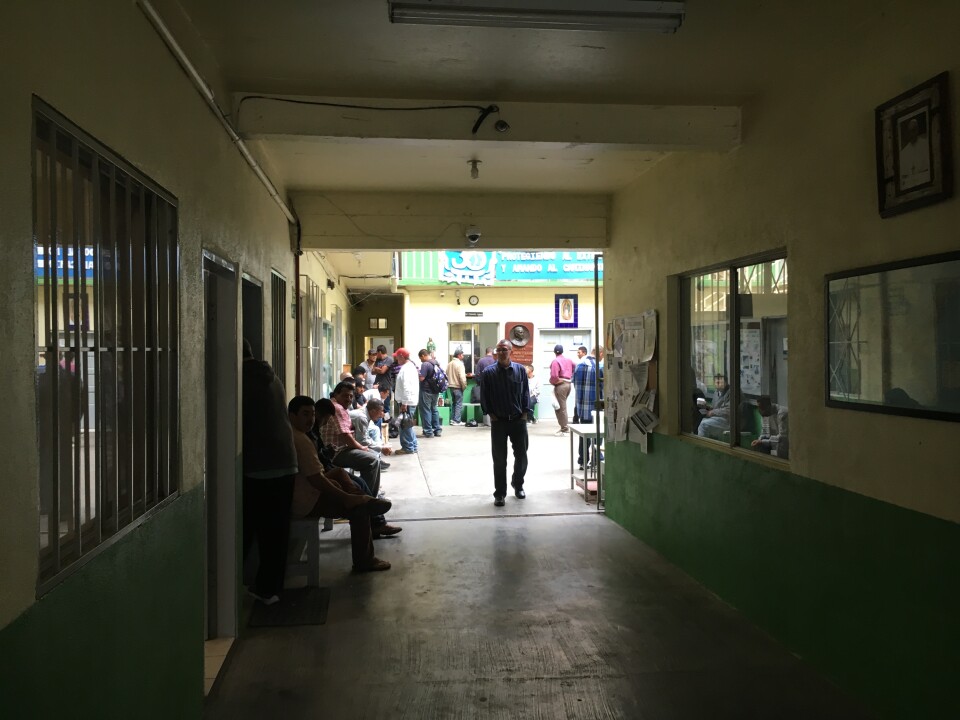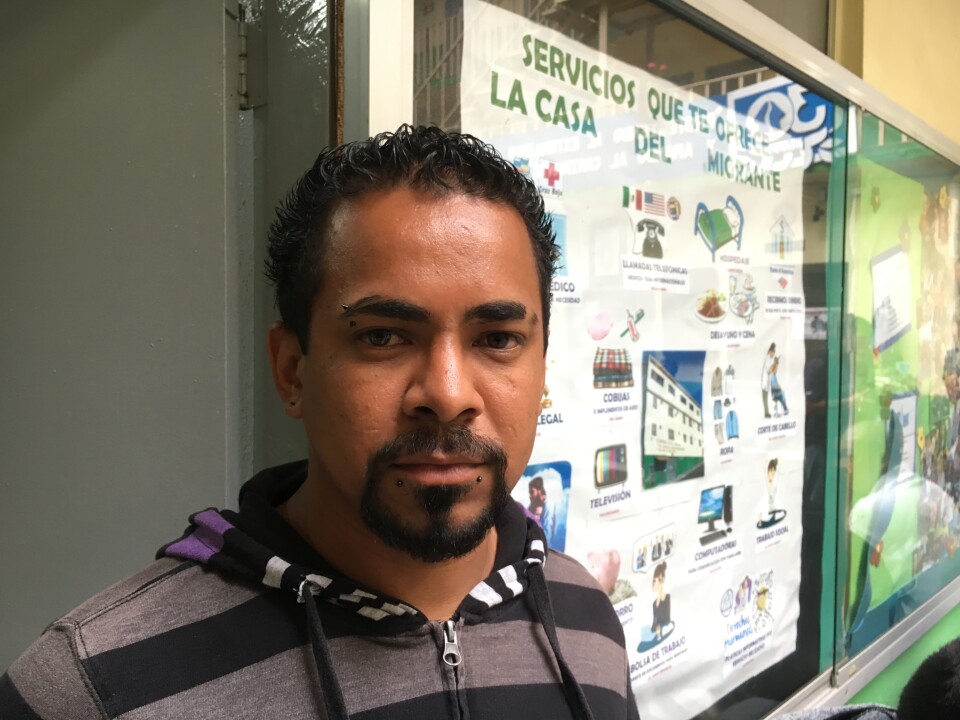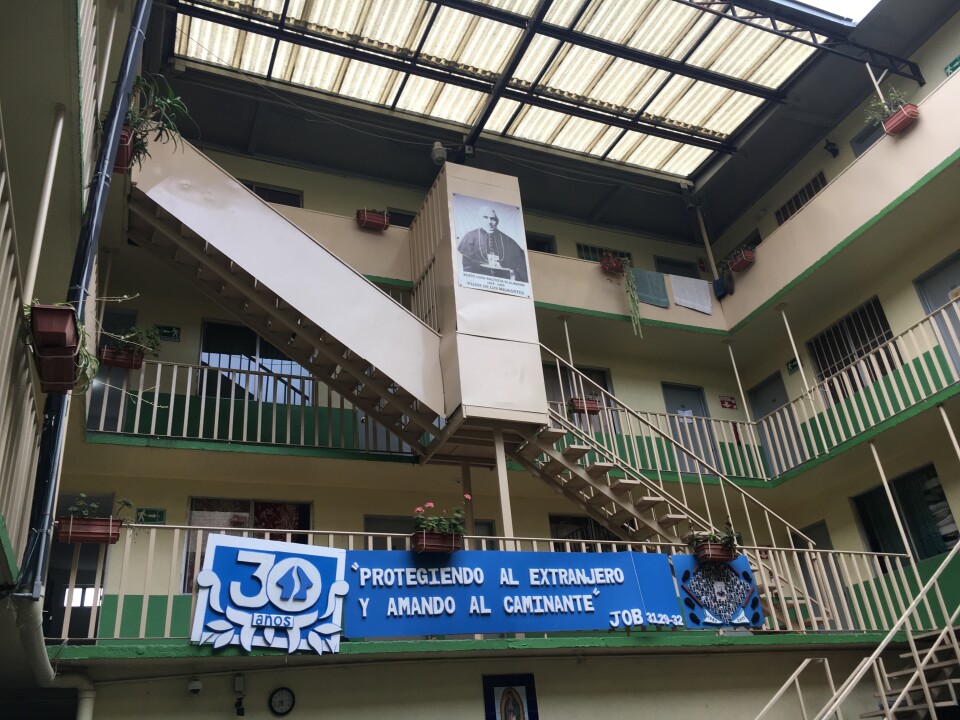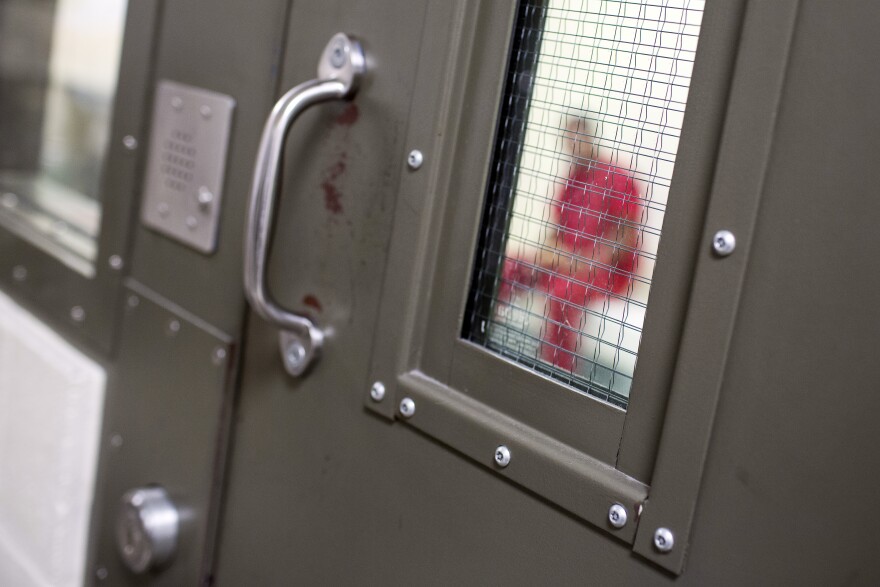Republican lawmakers weigh in on the firing of FBI Director Comey, what happens when someone is detained by ICE, "What a Fish Knows" explores inner lives of fish
As Democrats fume on Capitol Hill, more California Republicans react to Comey firing
Democratic senators expressed shock and concern Thursday over the firing of FBI director James Comey during an intelligence committee hearing on Capitol Hill.
The committee was scheduled to hear from Comey about the investigation into Russia's meddling in the 2016 election.
Instead, they had to settle for acting FBI director Andrew McCabe.
During questioning, North Carolina Senator Richard Burr referenced a line from President Trump's dismissal letter, in which Trump claimed Comey had informed him on three separate occasions he was not under investigation.
Burr asked McCabe, "Did you ever hear director Comey tell the President he was not the subject of an investigation?"
The acting director may have been dealing with first-time hearing jitters. McCabe had to repeat his answer with his microphone turned on.
"Rookie mistake, I'm sorry," he began. "Sir I can't comment on any conversations the director may have had with the president," McCabe said.
Florida Senator Marco Rubio then asked McCabe if the dismissal was negatively impacting any work being done at the FBI.
"As you know Senator, the work of the men and women of the FBI continues despite any changes in circumstance, and decisions," he said. "So there has been no effort to impede our investigation to date. Simply put sir, you cannot stop the men and women of the FBI from doing the right thing, protecting the American people, and upholding the constitution."
California's delegation reacts
Almost a day and a half since Comey - and the rest of the world - learned he was out of a job, California Democrats continued to express profound concerns that the President was interfering with an active investigation.
They echoed comments made Wednesday on KPCC by Representative Adam Schiff.
"No one can tell whether this is something that the deputy attorney general recommended on his own and the president acted on, or the president essentially asked the justice department 'give me reasons to fire this guy' and they complied," he said.
On Wednesday, KQED's political editor Scott Shafer joined KPCC to discuss how the state's Republican members of congress were reacting.
He had a one word answer: "crickets."
But the silence didn't last.
Several California Republicans released statements praising the president's decision.
That includes Majority Leader Kevin McCarthy of Bakersfield. He appeared at a live POLITICO event Wednesday night in San Francisco, where he said it was time for Comey to go.
"I don't think the director of the FBI should be a household name to everybody," McCarthy said. "I personally think when the FBI director thinks he becomes also the Attorney General and the prosecutor, he's probably overstepped... I would argue that Comey made the FBI political. And that's probably not the place to be."
But it hasn't been an entirely united front. At least one California Republican, Ed Royce of Fullerton, tweeted reservations with Comey's dismissal. He expressed support for a vigorous Russia investigation.
"Timing of Comey's firing raises many questions. We now need a top-notch, independent FBI director to finish the Russia investigation," Royce said in a tweet from his House Foreign Affairs Committee account, where he serves as chairman.
KPCC has reached out to Rep. Royce and several California Republican members of congress for further comment.
***Update: In an interview Thursday on Capitol Public Radio, Congressman Tom McClintock (R-Elk Grove) said he believes a special prosecutor should take over the investigation into Russian interference in U.S. elections.
Click on the blue media player at the top of the page to hear this segment.
Here's what happens to undocumented immigrants when they're detained
"I want to know what happens to L.A.-area undocumented people when they are detained" – KPCC listener Tina Shull on SoCal. So Curious.
The threat of deportation weighs heavily on many people living in the U.S. illegally.
A lot of things can happen, though, between being picked up by immigration officials and actually getting sent back to your home country.
To help answer Tina's question, KPCC's immigration reporter Leslie Berestein Rojas joined Take Two.
Say you're undocumented and you get picked up by ICE. What happens?
It really depends on your case: where you're from, what your background is, if you have a criminal record, etc.
But I'll give you some basics.
Say you're from Mexico, which shares a land border with the U.S., and you get picked up incidentally – at a worksite or wherever.
You don't have a deportation order, but you are living here illegally.
If you don't have a criminal record, chances are you'll get sent out of the country pretty fast.
You'll be offered a "voluntary return," which means you don't fight it.
In that case, you could be transported to the border the same day.
But does everyone get a shot at a legal hearing if they want it?
Anyone can ask to see a judge, and anyone can say they have a credible fear of going back.
In that case, officials will determine if you're a flight risk or if you're a security threat.
At that point, they'll decide whether to put you in detention. If you have a criminal record, chances are good that will happen.
If you have a deportation order already, it could go a couple of ways.
They could simply reinstate the deportation order and get you out of the country ASAP.
Or, if you have been formally deported before and you've come back, they'll mostly likely try to prosecute you. That means federal jail time.
What if you're not from Mexico?
Well, they can't just send you across the border, right?
So there's a good chance you'll be detained.
Pretty much the same rules apply, otherwise – you can appeal your deportation or not.
If you appeal, you could be detained for some time as your case moves through immigration court.
If not, they'll send you back to your home country as soon as they can get travel documents for you, and get you on a flight.
So if you have one of those more complicated cases and you are detained, where would you be placed?
The idea is to hold people close to home, though that doesn't always work out. It depends on where there is space.
If you're from the LA area, there's a good chance you'll wind up at the detention center in Adelanto, which is about 90 miles from L.A., or at one of two county jails in Orange County that contract out bed space for immigrant detention.
If there's no space, they might send you farther out.
And by the way, one important note: say you're a legal permanent resident – a green card holder – but you've committed a crime that can get you deported.
Chances are you'll be in detention for a while. It's not only because you'll be considered a mandatory detainee because of your crime, but because you have a lot invested in the U.S.
Legal residents will typically appeal their deportation, and this can take a while.
Let's get back to those who are sent back to Mexico. What happens when they get there?
Immigration officials will take you to the border and deliver you through a turnstile to Mexican immigration officials.
Government workers there will process you and give you some information and pointers, depending on where you're going.
Then you'll be referred to a few places where you can say, shelters like Casa Del Migrante, for example, which has received deportees for years.
Then it's up to you. Some people will try to come back, but that's become a lot more difficult and expensive in recent years.
For many SoCal deportees, this Tijuana shelter is a first stop
The men crowded in the dark hallway of the migrant shelter, perched on a steep hill overlooking the Tijuana River and the winding, dense streets below. It was dinner time. And more than a 100 men, most recent arrivals from the U.S., were gathering.
For most of its 30-year-history, Casa del Migrante in Tijuana was a place to rest and find refuge for those heading north. But in recent years, it's become a first stop for a different group: those deported from Southern California.
"We've had people deported who speak no Spanish," said Father Patrick Murphy, the director of the Casa del Migrante, which was founded by the Scalabrini order of Catholics in 1987. "They went to the U.S. as babies, they grew up in an all-Anglo environment, so they come here speaking more English than Spanish. They're more fans of the Dallas Cowboys than the Xolos of Tijuana, so that's always the test. Sometimes you ask them where they are from and they say, 'Los Angeles,' and you say 'No, what part of Mexico?' and they say, 'No, I'm from Los Angeles,' because that's what they know."

Take Two's A. Martínez speaks with Dorian Merina about his recent visit to the shelter.
Give us a quick snapshot of the shelter. Who was there when you visited, where were they from?
The shelter has 140 beds, though during an especially busy time it can house up to 150. The migrants are all men. (There's a separate shelter nearby, called the Instituto Madre Assunta, that houses women and children.) The night I was there (May 6, 2017), there were 120 men. Fifteen were Central American, five were from African countries and the rest were Mexicans. Remember hearing about the arrival of Haitians last summer? That was something new for the shelters in Tijuana. The last Haitian left Casa del Migrante the day before I arrived. Recently, just two weeks ago, West Africans have started showing up. Men from countries like the Congo, Cameroon and Sierra Leone. They say that they plan to apply for political asylum and that more are on the way to Tijuana. Still, Murphy says that in recent years, deportees from the U.S. make up a bigger and bigger share, until now, 9 in 10 of the migrants at the shelter are deportees.

How does the rise of deportees change the mission of the shelter? And what kinds of services are available to a deportee coming from Los Angeles?
The staff at Casa del Migrante say there's a different emphasis now. It's more about reintegrating the deportees into Mexican society. That means helping them find jobs, a place to live. They now have a psychologist and a lawyer on staff. Many deportees want to return to the U.S. right away, but the emphasis in the house is getting them on what they call a "life project." That is, a way that they can find meaning in this new phase of their life.
Since Donald Trump has been president, there are reports that immigration officials are taking more action. Is this evident at Casa del Migrante?
It's true that nationwide, ICE arrests are up this year. (According to ICE's Enforcement and Removal Operations, there have been 41,898 total arrests during the first four months of 2017, compared to 31,128 during that same period last year.) However, the levels of arrests are still lower than in some recent years in the past, such as 2014, which hit nearly 55,000 arrests. At the local level, arrests are pretty steady from January to April this year, compared to last year, though non-criminal arrests have more than doubled, according to data from ICE's Los Angeles field office. How that all translates to the picture in Tijuana is different, though. Interestingly, the Casa del Migrante has actually seen a drop in deportees, about 30 percent through March this year. But the Casa and other shelters in Tijuana, say they are trying to get ready for an anticipated rise in deportees once the Trump Administration is able to get organized and follow through with its pledge to step up deportations.

Did you speak to migrants from Southern California? And how do they describe the circumstances along the border?
Yes, and though at least at the Casa del Migrante, the numbers are down, it's clear deportees from our area are continuing to show up. I met one 37-year-old man who was raised in the San Fernando Valley. He went to high school in Sun Valley, was deported three weeks ago and he's just starting to get his primary documents, like a driver's license. I met him at a different shelter in Tijuana. I also met Melvin Santiago, he's 30 years old, has three children and a wife in San Diego. He says he was deported after being caught for drug possession and put on probation. I asked him if he had plans to try to cross back into the U.S. He said it was too dangerous and expensive at this point:
"It's very expensive, $10,000 right now is what the smugglers are charging. Plus, there are the mafias, the cartels, they can kidnap you in Tijuana and it's very difficult because they can hold you and then demand from your family, if you have family in the U.S., money to release you. Also, in Arizona there are the cartels, so it's very tough to try to enter the U.S. right now."
Instead, Santiago has found a job at a light factory. He says he's making about 250 pesos a day (or about $13). He's also found an apartment to move into. And he's trying to stay in touch with his wife and children by phone.
Considering the violence along the border and the step up in immigration action, what are the shelters like Casa del Migrante expecting in the coming months?
Father Murphy says Mexican authorities are coordinating with the shelter in Tijuana to prepare, but they have a limited capacity. He's in touch with four other main shelters in the area, with a maximum bed space of about 250 or so. He's also concerned about deportees who may be elderly or have special physical or mental needs, since his shelter is not well-equipped to deal with them. And, as we've noted, Tijuana can be a dangerous place now. Violence has risen in the past year, year and a half, so people could be very vulnerable, especially if you're not familiar with the area, haven't been there before, or haven't been there for a long time.

The interview has been edited and condensed for clarity.
The Trump effect on colleges: fewer international students applying
Dan Schnur on UC scandal: ‘The key is providing another set of eyes... without compromising their academic independence’
An ongoing audit into the University of California administration has revealed lavish spending, excessive salaries and some other pretty serious problems.
No one can really agree what to do about it or even who should be in charge of reform.
But Dan Schnur, professor of political communications at the USC does has an idea. He wrote about it in a commentary published in the San Francisco Chronicle.
And he suggests that creating an independent commission is the key to addressing concerns over a mismanage UC system.
The legislature has become increasingly restive as to what they see as not just irresponsible spending... but an unwillingness to disclose that spending. So, they're looking for a more aggressive oversight role.
The problem is, the state constitution calls for the UC system to be autonomous in order to provide some academic independence from political influence.
...If you don't want to eliminate that academic autonomy and independence by turning oversight over to the legislature, perhaps there's an opportunity for Governor Brown to appoint an independent commission, separate from the legislature to lead the investigation, in order to try to square this circle.
Quotes edited for clarity.
To hear the full interview with Dan Schnur, click on the blue Media Player above.
Correction: An earlier version of this story misspelled Dan Schnur's name. KPCC regrets the error.
The Ride: California law enforcement tests new tech to combat drugged driving
We all know drunk driving is dangerous. But California law enforcement agencies now say drivers killed in crashes are a lot more likely to be on drugs than to be drunk.
"Forty-three percent of drivers tested in fatal crashes in 2015 had used a legal or illegal drug, surpassing 37 percent who tested above the legal limit for alcohol," said David Swing, director at large for the California Police Chiefs Assn. "While law enforcement has many tools to combat drunk driving, our drugged driving toolbox is far less equipped."
Swing was one of several law enforcement officers attending the demonstration of a new traffic stop procedure and drugged driving saliva test in Sacramento Wednesday. Hosted by California Assemblyman Tom Lackey (R-Palmdale) and attended by state legislators from both sides of the aisle, along with representatives from the California Highway Patrol and Sacramento Police Department, the event showcased an oral swab test that can be used to detect six different types of drugs during a roadside traffic stop.
Marijuana, cocaine, methamphetamine, amphetamine, methadone and benzodiazepine can all be detected using a portable machine from Alere Toxicology called the DDS. By early next year, the DDS will also be able to detect oxycontin, according to company representative Fred Delfino.
Police departments in Los Angeles, Fullerton, Sacramento and Bakersfield are currently using swab tests on a very limited basis.
"We’re trying to arm law enforcement with some tools to improve their ability to get dangerous drivers off the road," said Assemblyman Lackey, a former member of the California Highway Patrol. "There’s equipment available and our goal is to get it in their hands to protect us in a more effective way."
In 2015, Lackey introduced AB 1356, a bill that would have authorized saliva as a field sobriety test. A court case in Bakersfield last year has since ruled that saliva tests are admissible in court to prove impaired driving from drugs. Lackey is the author of another piece of legislation introduced this year; under AB 6, the California Highway Patrol would form a task force to help the state develop a coordinated response to drugged driving, including the use of saliva tests.
Just beneath the surface: The secret lives of fish
Turns out there's a lot more going on in fish brains than most of us realize. But fear not, Jonathan Balcombe's popular book dives into just that. "What a Fish Knows: The Inner Lives of Our Underwater Cousins" explores myths surrounding fish and works to give insight into what fish in our oceans are thinking and feeling.
That's right, fish... thinking and feeling.
For more on the inner machinations and secret lives of our "underwater cousins," A Martinez spoke with Balcombe.
Common misconceptions about fish?
"That they're primitive. They're in fact highly evolved. They've been around for 450 million years, which is about 450 times as long as we've been around. They're dimwitted, that they're emotionless, unfeeling, that they don't feel pain. These are all myths. I don't even like saying them because I don't want to reinforce the myths. But they're all some of the myths that I've busted in this book."
Why do we believe that?
"I think it's partly that fishes have been literally and figuratively below the surface and are thinking and are conscious. They live in another realm, right? You look out over the ocean or over a lake, you're not seeing any fishes, generally...
And so we've been alienated from them. And the fact that they don't blink, well they don't need to, they live in an aqueous medium. Their eyes are bathed in water constantly. We don't hear the sounds they make, they make tons of sounds but we don't hear them because they're under the water.
So, I think that's the key reason. And I think why we're emerging from this now, finally, is that we have the technologies. We have scuba gear, we have underwater photography, and you can watch YouTube videos of fishes doing stuff that would've been thought fantasy just a generation ago.
It's one thing for you to say that though, but what's the science behind it?
"A key reason why I wrote this book, is I was encountering in my everyday work, science that really surprised me. It was like, 'Wow, these guys are doing stuff that I had no idea.' They have thoughts, they plan, they use tools, they fall for optical illusions, they have sex lives, they have interesting social lives, they can be devious and machiavellian, I mean the list goes on...
It's really quite an explosion of information that we now have coming out about fishes. But most of it doesn't filter up to the general public which is why I wanted to write a book like this that's accessible to lay readers."
To hear the full segment, click the blue play button above.
Juvenile great white sharks gather off SoCal beaches
In case you hadn't heard, there's an offshore party that's getting more crowded by the day. And no, it's not a booze cruise — it's a shark party.
An Orange County Sheriff's helicopter shot video Wednesday of a school of 15 juvenile great white sharks very near the beach.
Just the day before, 10 other young great whites were spotted feeding very close to the Long Beach shore.
Chris Lowe from the Long Beach Shark Lab joined "Take Two" last week following the shark attack off San Clemente to explain the recent shark activity along the SoCal coast.
We've been studying white sharks in Southern California now for almost 10 years, and we've learned a lot about what the babies do. Every time we think we've figured out a pattern, the patterns change. So we suspect that some of the pattern change is attributed to changes in our oceanographic conditions, like the strong El Niño we just came out of, and the fact that we might be entering another El Niño so quickly. So it could be that global climate change is what's driving some of this pattern. We just don't know because the population is rising, and we don't know if it's global climate change, population increase, or a little of both.
Although we may see more of adult sharks than we're used to, Lowe says sightings of young sharks off our waters is not unusual.
People have to remember: Spring and summer have always been shark season in Southern California. The Southern California Bight, that area that goes from Santa Barbara to kind of mid-Baja, is known as a nursery for most of the Pacific white sharks because, frankly, they're some of the most productive waters in the world. So every spring this has been happening. It's just that over time, we depleted many of our shark populations, and it's literally taken them decades to recover.
The Orange County Sheriff's Department captured images of the sharks right on the surf line enjoying the waves alongside paddle boarders.




